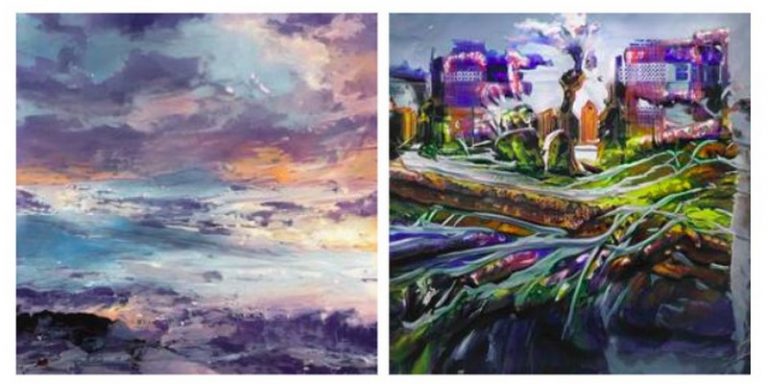
Art and artificial intelligence: two fields that seem so far away, yet can find such beautiful applications. Earlier this month, a digital artist by the name of Dries Depoorter designed a toolto unmask Members of Parliament when they were using their smartphones in plenary. In the same month, a small team of art and AI enthusiasts developed an algorithm called Artifly that allows users to create a personalized work of art according to their desires, which can then be purchased. Let’s take a look at this amazing new tool.
An artificial intelligence tool that creates works of art according to the style you want
In 2018, Christie’s, an auction company, sold “The Portrait of Edmond de Belamy” for ![]() 10,000. What is special about this work? It is the first work entirely conceived by AI (See our article dedicated to the Obvious collective, author of the portrait, in the magazine ActuIA N°3). A year later, Ben Kovalis, Eyal Fisher and Guy Haimovitz launched the Art AI gallery, a collection of artworks designed with the help of artificial intelligence and tools they have developed.
10,000. What is special about this work? It is the first work entirely conceived by AI (See our article dedicated to the Obvious collective, author of the portrait, in the magazine ActuIA N°3). A year later, Ben Kovalis, Eyal Fisher and Guy Haimovitz launched the Art AI gallery, a collection of artworks designed with the help of artificial intelligence and tools they have developed.
In July 2021, the three experts took their algorithm development a step further: they designed Artifly, a tool that allows users to design their own artwork automatically according to their desires, using AI. Users scroll through a selection of artworks and choose the designs that interest them. Artifly understands what style of art fits you and learns from your selections to create a brand new custom artwork in a minute, which they can purchase if they wish.
Will AI ever replace artists? Ben Kovalis refutes this theory.
When art lovers and specialists discover the tool of Kovalis, Fishet and Haimovitz, they are of course immediately intrigued, Ben Kovalis rightly explains:
“We are confronted with a common question when we present Artifly: “so you want to replace human artists with robots?”. When I hear this question, my answer is: Certainly not, first of all because we don’t think it’s possible to replace artists. It is simply something that improves art. Human effort is still needed to set up the artistic process. You need a lot of sweat, tears and human involvement to create an AI algorithm that creates something beautiful.”
He goes on to draw a parallel with music and the use of synthesizers in the 1980s:
“Not everyone liked the synthesizer. Many exploited it, many didn’t use it, but it became irrevocably something that helped create pop music. Today, the music is the same music we know and love, it just has a little bit of technology in it. It’s the same thing we do with art.”
Depending on what the algorithm comes up with, prices range from $29 to a few hundred dollars for the most expensive works. The three collaborators are now looking to see if there is a secondary (or resale) market that could exist based on the certificates of authenticity provided with the work and whether the price of the works made by Artifly will ever rise.
Translated from L’outil Artifly exploite l’intelligence artificielle pour créer des œuvres d’art selon la demande des passionnés









